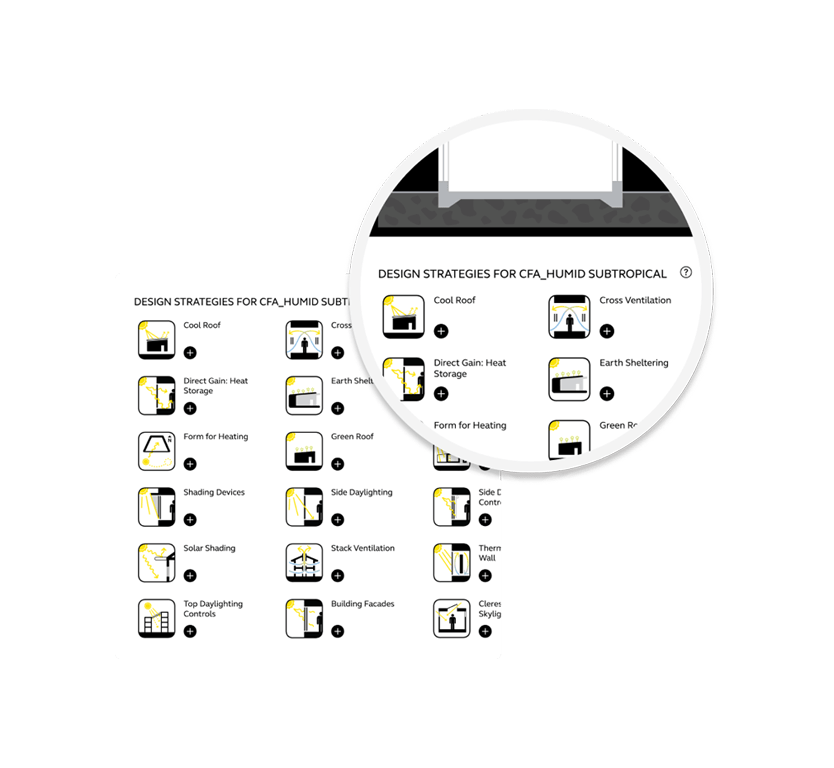Arcadis’s vision for the future is designing a better place for all. Understanding climate and developing an appropriate architectural response is one of the first steps in our design process.
CLIMATE SCOUT helps users design buildings that uniquely respond to a site by providing climate-specific design advice at the building stage. To achieve this, it uses the Köppen-Geiger climate classification and building scale design strategies from Architecture 2030’s Palette.

The Köppen-Geiger climate classification system empirically maps biome distributions worldwide, organizing regions by similar vegetation characteristics. Developed in the late 19th century, and still widely used today for applications that must consider different climates, such as ecological modelling or climate change impact assessments.
-
READ MORE
This system classifies climate into five main classes and 30 sub-types. The five main climate groups are A (tropical), B (dry), C (temperate), D (continental), and E (polar). Each group and subgroup include different seasonal precipitation and temperature patterns. All climates are assigned a primary group represented by the first letter. Following, climates, except those in the E group, are given a seasonal precipitation subgroup (the second letter). A temperature subgroup, assigned for all groups except A, indicated by the third letter for climates in B, C, and D, and the second letter for climates in E.
27 building scale strategies taken from the 2030 palette are paired with the 30 climate subtypes to determine their applicability for each of the Köppen-Geiger climates. The user can filter out, select, and combine appropriate strategies for a selected climate. As the user selects these curated strategies, they appear in real-time overlaid in diagrammatic form, providing an immediate visual connection between climate and building response. Most climate analysis tools effectively visualize climate data and quantify the effect of some strategies on thermal comfort. Still, they do not provide a visual image of these strategies integrated into an architectural response. CLIMATE SCOUT does this, providing a more integrated and coherent vision of the design strategies working in unison.
Through a combination of data and images, CLIMATE SCOUT connects climate with architecture to help users create better performing, responsive buildings.
How to use CLIMATESCOUT
Get in touch
If you’d like to book a demo with one of our CLIMATESCOUT experts






